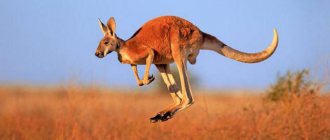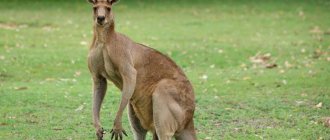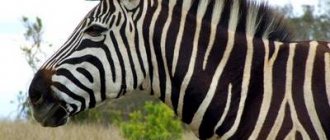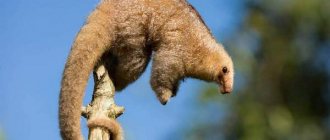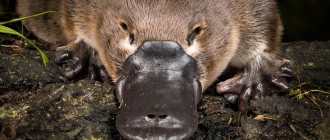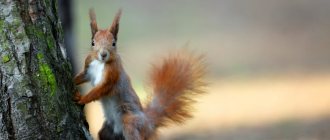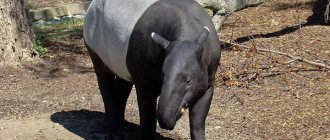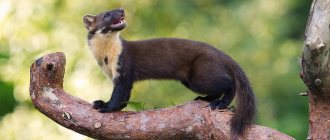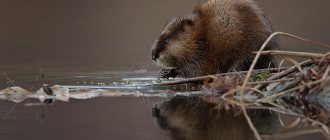The kangaroo is the most famous of all marsupials; Moreover, this very special animal has become australia emblemlike your homeland.
Kangaroos are known for their characteristics that set them apart from most other species. For example, kangaroos have a pouch that transports and nourishes their young, the marsupial pouch . These animals also have a powerful musculoskeletal system, thanks to which they can achieve great speed and length when jumping.
Surely you have wondered at some point how far can a kangaroo jump? This HowMeow.ru article will clear your doubts.
Description and features
There is an interesting myth. When the English navigator, discoverer of Australia, the famous James Cook, for the first time on the ship Endeavor, sailed to the eastern shore of the continent, then new to everyone, and was surprised to discover there many types of previously unknown plants and unusual representatives of the fauna, one of the strangest in appearance, original animals, the first one that caught his eye was a creature that moved quickly on its hind legs, deftly pushing off the ground with them.
It is not surprising that the discoverer of the continent was interested in the name of the strange jumping creature, which some of his people even thought was an overseas monster, and he received an answer from the native: “Gangurru.” That is why, as the legend says, Cook decided that it was customary to call these animals this way, although the savage only told him that he did not understand him.
Since then, this representative of the fauna, strange to Europeans, has been given the name: Kangaroo . And although later linguists doubted the truth of the described historical myth, this does not mean at all that the animal itself is not interesting, and the story about it is not the pure truth. But now the image of this creature adorns the national emblem of Australia, being the personification and symbol of the continent once discovered by Cook.
The kangaroo is an unusual and even in some sense fantastic creature. This is a marsupial, classified as a mammal, and therefore, like all relatives from this class, gives birth to living offspring. It only gives birth to cubs at an unusually early stage and carries them until their final formation in the pouch - a convenient skin pocket located on the belly of these creatures. Marsupials are found only on the American and Australian continents, and the lands of the latter are home to the most of them.
This continent, once discovered by Cook, is generally famous for its huge number of endemics, that is, specimens of fauna found only in these parts. The representative of the animal kingdom we are considering is one of them. Among other marsupials in this part of the world, we can highlight the wombat as an example - a furry animal that spends its life underground. The koala is another animal that is similar to the kangaroo in that it has a pocket of skin on its abdomen. There are approximately 180 species of marsupials in Australia.
Kangaroos move by jumping
A notable part of the kangaroo's body is their incredibly muscular, powerful hind legs with developed muscles on the hips and four-toed feet. They allow this strange beast to reliably repel its offenders with their blows, and also to move with impressive speed on only two legs, while using its long tail as a rudder, helping to balance and correcting the trajectory of movement.
It is also curious that, unlike the lower part of the body, which is perfectly developed, the upper part seems underdeveloped. The kangaroo's head is small; the muzzle can be shortened, but also long, depending on the variety; shoulders are narrow. Short front legs that are not covered with hair are weak. They are equipped with five fingers ending in rather long, sharp claws.
These fingers of these animals are very developed and mobile; with them such creatures are able to grab surrounding objects, hold food and even comb their own fur. By the way, the fur of such animals is soft and thick, and can be red, gray or black in color in various shades. With its legs, a kangaroo can finish off a person, and its claws allow it to gut not very large animals.
Natural enemies of wallabies
Photo: Wallaby
When threatened, wallabies hit their legs and make a raucous sound to alert others. They can strike their opponents hard with their hind legs and bite, a technique that is also used by males fighting each other.
Wallabies have several natural predators:
- Dingo;
- Wedge-tailed eagles;
- Tasmanian devils;
- Large reptiles such as crocodiles and snakes.
The wallaby is able to protect itself from predators by striking them with its long, powerful tail. Small wallabies fall prey to native lizards, snakes and wedge-tailed eagles. Humans also pose a significant threat to wallabies. They are a traditional food source for local residents, who hunt them for their meat and fur.
Interesting fact! The importation of foxes, cats, and dogs into Australia and their rapid proliferation has had a detrimental effect on many species, pushing some to the brink of extinction.
To improve populations, some species of endangered captive-bred wallabies are released into the wild, where they immediately become easy prey for predators in the wild. Efforts to reintroduce them often lead to problems. If you can teach wallabies to fear predators, this will prevent the problem.
Wallabies have a general and innate idea of what their predators look like. Therefore, people strive to awaken memories in them. When a bunch of animals are released into the wild, they need support. It is too early to tell whether training will improve the wallabies' chances of survival.
Kinds
The name “kangaroo” is sometimes taken to refer to all representatives of the family bearing the name: kangaroos. But more often this word is used to refer to the largest species of this family (they will be described below), and small kangaroos are usually called differently. In fact, the size of the members of different species varies quite significantly.
Kangaroos can measure no more than 25 cm, and can also measure up to one and a half meters or more. The largest red kangaroos are considered the largest, and the record holders for weight are members of the forest gray variety (among those mentioned, individuals weighing 100 kg are noted). These animals are Australian endemics, but they are also found on islands close to the specified mainland: in Tasmania, New Guinea and others. All the features of their appearance are clearly visible in the photo of a kangaroo .
In total, fourteen genera are known in the kangaroo family. Some of them are more widely represented, others less so, but the number of kangaroo species in the overall count is enormous. Let us describe some of them in more detail.
1. Red large kangaroo . This species belongs to the type of gigantic kangaroo; individual specimens weigh on average 85 kg, as well as an almost meter-long tail. Such animals are found either in the northern part of the continent in tropical forests or along the eastern coast in the south of the continent, preferring to inhabit the fertile areas of the said area. Jumping on their hind legs, they are able to move many tens of kilometers in an hour. Animals have a wide muzzle, and their ears are pointed and long.
Big red kangaroo
2. The eastern gray kangaroo is a very numerous species, and the population of its individuals numbers up to two million. Members of this species, which are second in size after their counterparts described above, are closest to humans in habitat, since they prefer to inhabit densely populated areas of Australia. They are found in the south and east of the continent.
Eastern gray kangaroo
3. Wallabies are small kangaroos that form a group of species. They are no more than 70 cm tall, but they are especially large, while the weight of some may not exceed 7 kg. However, despite their size, these animals jump expertly. The champions of the human race would envy them. The jump length of this type of kangaroo can be 10 meters. They are found in the steppes, swamps and mountains of both mainland Australia and nearby islands.
Female wallaby with baby in pouch
4. The kangaroo rat is more similar not even to the two animals mentioned in the name, but to rabbits. By the way, such creatures lead a completely appropriate life, living in grassy thickets, looking for and arranging homes there.
Kangaroo rat
5. Quokkas are babies from this family, weighing about 4 kg and the size of a cat, defenseless creatures that have an external resemblance to other kangaroos, but also to mice.
Quokkas
Where do wallabies live?
Photo: Wallaby Kangaroo
Wallabies are widespread throughout Australia, particularly in more remote, heavily forested areas, less so in the large semi-arid plains which are better suited to large ones. slender and faster-footed kangaroos. They can also be found on the island of Guinea, which was part of mainland Australia until recent geological times.
Rock wallabies live almost exclusively in rugged terrain, along rocky hills, boulders, sandstone and caves. Other species prefer arid grassy plains or well-greened coastal areas and tropical forests. The sandy and tawny wallabies are common in South Australia. Other species are less common.
Several wallaby species have been introduced to other parts of the world, and there are a number of breeding populations, including:
- Kawau Island became home to large numbers of tammar (eugenii), parma (parma rediscovered, thought extinct for 100 years), swamp (bicolor) and rock-tailed wallabies (Petrogale penicillata) from introductions in 1870;
- The Lake Tarawera area has a large population of tammar (eugenii) in New Zealand;
- In southern New Zealand there are many Bennett's wallabies;
- On the Isle of Man, there are more than 100 tawny wallabies in the area, descendants of a pair that escaped from a wildlife park in 1970;
- Hawaii has a small population on the island of Oahu, resulting from the escape of rock-tailed wallabies (Petrogale penicillata) from a zoo in 1916;
- In England's Peak District Nature Reserve, a population also emerged from zoo escapees in 1940;
- On the island of Inchconnachan in Scotland, there are about 28 tawny wallabies;
- Several individuals were introduced to Lambay Island off the east coast of Ireland in the 1950s. The colony expanded in the 1980s following a sudden population boom at Dublin Zoo;
- In France, in the forest of Rambouillet, 50 km west of Paris, there is a wild group of about 30 Bennett's wallabies. The population began in the 1970s when wallabies escaped from Emanse Zoo after a storm.
Lifestyle and habitat
These creatures could well serve as a symbol of perpetual motion. They are able to jump to a height that is twice their own height, and this is not the limit. In addition, most species of kangaroos are not at all harmless and fight deftly, especially the largest of them. It is curious that when striking with their hind legs, in order not to fall, they have the habit of leaning on their tail.
There are many species of such animals, and each of them inhabits its own corners of the Green Continent, but most of all they prefer pastures and shrouds, settling in flat areas, frolicking in thickets of grass and bushes. Some species also adapt well to life in swamps and in the mountains among hills, stones and rocks. Often in Australia, kangaroos can be found near populated areas and their presence can be found in farmlands and even on the outskirts of cities.
Most kangaroos are naturally adapted to move on land, but there are exceptions to this rule. These are tree kangaroos that live in tropical forests and spend most of their existence in those places in the trees.
The population of these animals is large, and there are no noticeable declines in it. However, enough individuals still die every year. Blame it on wildfires. A good reason for the decrease in the number of kangaroos is also human activity, and of course hunting for these representatives of the animal kingdom.
Although killing or harming kangaroos is prohibited under Australian law. However, such regulations are often violated by farmers for their own benefit. In addition, poachers and lovers of delicacies shoot these animals for their incomparable meat. Natural enemies of these animals include foxes, dingoes, large birds and snakes.
Cheetah
flickr/Olivier DELAERE
Cheetahs (lat. Acinonyx jubatus) are the best runners on the planet. At good speed, a cheetah can fly a distance of about 6-9 meters in a jump. Interestingly, the cheetah spends only 1/2 a second on one such jump. The body length of the predator is from 115 to 140 cm.
Nutrition
Kangaroos eat only once a day. This happens just after sunset. It is safer for them to act this way. This is especially advisable, since by this time in tropical regions the heat is waning.
In terms of nutrition , the kangaroo is animal and prefers a menu of plant-based delicacies. Larger species feed on tough, thorny grass. Those of them that naturally have a short muzzle usually prefer to include bulbs, tubers and roots of a wide variety of flora in their diet. Some kangaroos love mushrooms. Small species of wallabies feed on fruits, seeds and grass leaves.
Kangaroo eats leaves
Such food does not differ in calorie content. However, kangaroos try to compensate for this deficiency with a variety of grasses and plants. True, predatory habits are inherent in tree kangaroos. In addition to bark, they can eat chicks and bird eggs.
These representatives of the animal world of the Green Continent drink surprisingly little, receiving enough moisture for their bodies from dew and plant juices. However, during dry periods the urgent need for water still begins to take its toll. In such unfavorable times, large kangaroos save themselves by digging wells. They can be quite deep; it happens that they go underground to a depth of 100 meters or more.
Kangaroo diet
Kangaroos feed mainly on plant foods. Their main daily diet consists of a variety of plants, including grass, clover and alfalfa, flowering legumes, eucalyptus and acacia foliage, vines and ferns. Marsupials also eat plant roots and tubers, fruits and berries. For some species, eating worms or insects is common.
Scientists have observed that adult male kangaroos feed about one hour longer than females . However, it is the diet of females that contains the most high-protein foods, which has a positive effect on the quality characteristics of the milk produced for feeding the baby.
Marsupials are resourceful, and therefore are able to adapt very well to many unfavorable external conditions, including the lack of usual food. In this case, animals can quite easily switch to other types of food, including plants that are not used for food even by indiscriminate and unpretentious representatives of the fauna.
Which animal can fly?
11 animals that, to everyone's surprise, can fly (11 photos)
- Copepods (flying frogs) ...
- Flying squirrel...
- Spiders...
- Flying dragons...
- Turkeys...
- Woolwings...
- Indo-Malayan lobe-tailed gecko...
- Dwarf flying couscous
Interesting materials:
Where is the Setup button on the keyboard? How long does it take to dry a keyboard? Why Sticky Keys? What is Sticky Keys? What is Sticky Keys? How to remove stuck keys? How is a children's tablet different from a regular tablet? What is the difference between a netbook and a laptop and tablet? What is better for a tablet, film or glass? What's better: tablet or computer?
Horses
flickr/Rob Gruhl
Horses (lat. Equus) are those animals that can “boast” of their extraordinary abilities. The thoroughbred horse is capable of jumping 8 m in length. The horse named Samting managed to reach a length of 8.4 meters, which became a real record among horses. But in the high jump, the best was the horse Guaso, who easily reached a height of 2.47 meters, and this happened in 1949. Since then, these records have not been broken.
Tiger
The tiger (lat. Panthera tigris) is one of the largest cats of prey in the world, it is also called the “lord of the taiga” or “nightmare of the jungle.”
flickr/DiscoverSiberia
The tiger has its own unique hunting style. He will never waste time on a fussy chase and running with obstacles, preferring wait-and-see tactics and the strongest throw - the long jump. In one jump he covers a distance of up to 10 meters.
impala antelope
flickr/Filecat
The impala antelope (lat. Aepyceros melampus) is a light, graceful African animal capable of jumping both in length (7.5-10 m) and in height (from 2.5 to 3 meters). They easily maneuver among the vegetation of the savannah, escaping pursuit, but more often they prefer good cover. Thanks to their graceful shape and color, they are almost invisible in thick grass.
